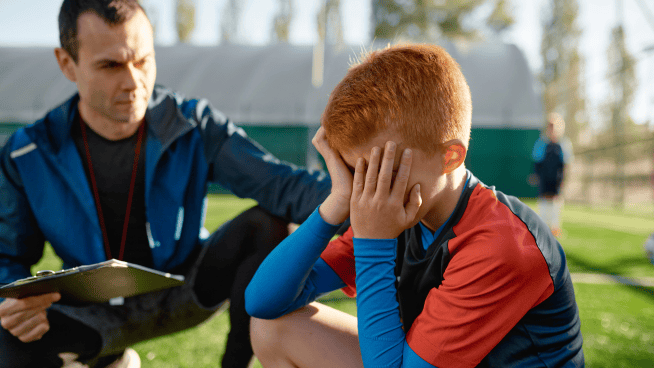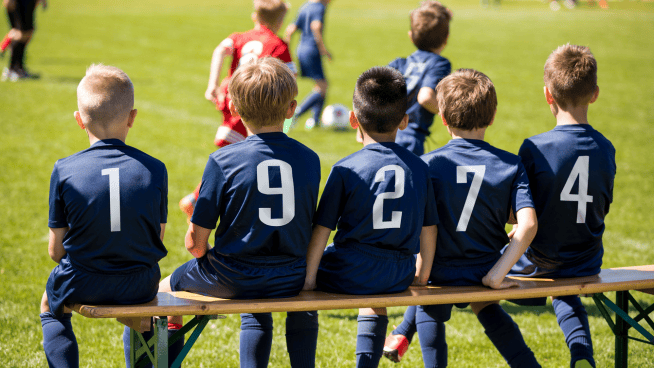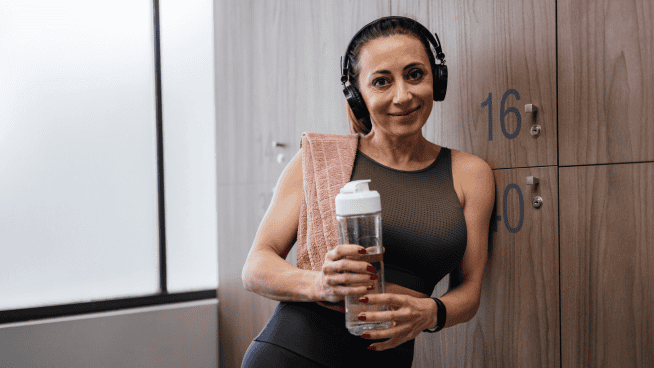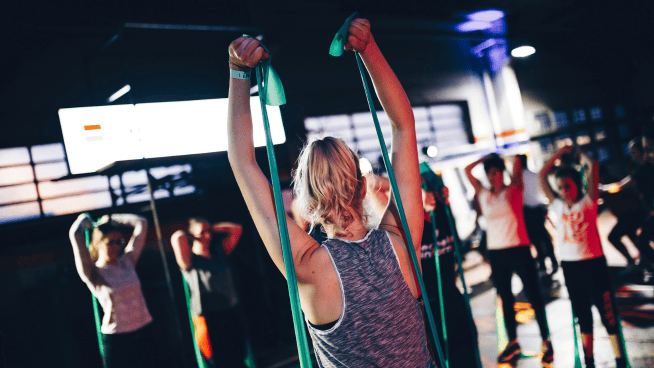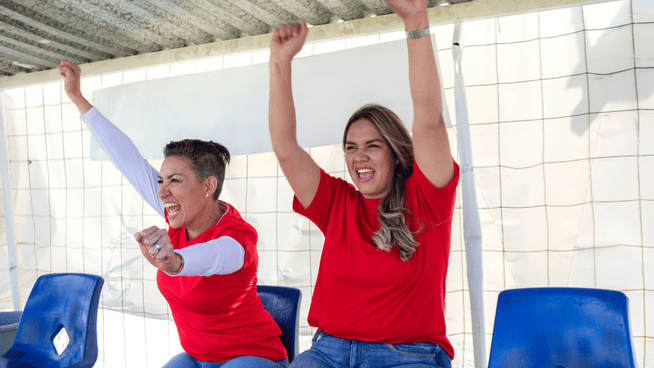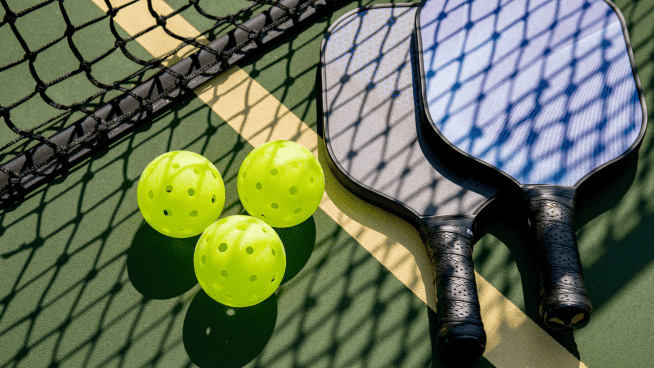Training a Team in the Weight Room? 5 Simple Hacks You Should Be Using
You can find several similarities between training the average person and training the competitive athlete. Since I’m a coach with experience in both sides of the spectrum, I felt it would be fitting to go over where things differ.
Training sports athletes requires an attention to injury prevention that transcends that of general population clientele, simply because their performance on the court or field is directly contingent on the training put in on the weight room floor. With that said, conventionally performed exercises may not be in the best interests of every athlete, especially when dealing with players who are larger than average, taller than average, and who may possess leverages that are favorable to excel in their sport, but unfavorable to excel in the weight room.
Sports team strength coaches would do well to abide by these directives to ensure the long-term health and performance of their athletes.
1. Trap Bar Deadlifts
I’ve seen this already being implemented plenty, but it’s time everyone stepped on board. If your strength facility for athletes doesn’t have trap bars, you’re depriving your athletes of a much healthier, safer way to be pulling lots of weight from the floor.
Simply put, if you’re not a competitive powerlifter, you should be using the trap bar for your Deadlifts. It provides unique benefits that a barbell can’t scratch, and better accommodates taller or long legged athletes for the following reasons:
- A higher pulling handle, with a neutral grip to boot. So the athlete doesn’t have to bend over as far, nor do they have to worry about mixing their grip on heavy sets. That means spine safety and happy shoulders.
- Better balance, since the shins aren’t being blocked from traveling forward the way a barbell would. That allows for more leg contribution, and a chance for an athlete to avoid pitching forward.
- As a guy who’s built like many football tight ends, the Trap Bar Deadlift has been a saving grace to my own health and leverages.
2. Hang Cleans
The decision to cut Cleans at the hang instead of pulling from the floor can be a game changer for an athlete’s back health. In basic terms, the exposure an athlete has to low back stress from hinging exercises like full-range Squats and Deadlifts is more than enough in my opinion. You don’t need to compound on that by way of performing another Deadlift pull as you start your full clean. I also like the fact that Hang Cleans usually use lighter weight than Cleans from the floor, which can encourage speed and power development.
3. Double Rope Your Face Pulls
This one’s short and sweet: Long arms (or very muscular arms) can frustrate an athlete’s ability to get the most out of Face Pulls due to tighter angles that don’t match the size of the levers. To exaggerate, a guy with a 60-inch reach will have a wider hand position than a guy with an 80-inch reach when both are using a single rope for face pulls.
It’s best to accommodate the longer-armed athlete by doubling up on the ropes for Face Pulls, as illustrated in the above video. This allows for better rotation at the shoulder when performing Face Pulls and better joint centration with less potential for shoulder glide.
4. Neutral Bar Overhead Work
Going directly overhead requires a bit more caution than most coaches are willing to invest. Truth is, if you want to do overhead work in a team setting and still keep your athletes’ shoulders healthy, neutral grip options are the ideal choice. Not all shoulders are built the same. A/C joint classifications can fall under 3 categories, two of which can start risking impingement in certain positions.
Changing the grip to neutral can temper the storm since the head of the humerus can roll behind the collarbone and free up some space. When adding implements like a landmine bar or Viking press to the mix, it makes things better, since the body gets to assume an angled position that isn’t directly perpendicular to the floor. That places fewer stress forces directly on the shoulder and spine. Check out these variations.
5. Embrace Ground Work
By “ground work” I mean staple bodyweight training. We have to remember that the most athletic versions of training are the versions that ask you to manipulate your own body’s weight while demonstrating control and stability. Gymnasts don’t develop this excellence through their Deadlift or Squat numbers (though it may help). There’s a reason many clients come to me with a 300-plus Deadlift, but then their hips sag and they’re shaking like a leaf when I put them in a bodyweight Chinese Plank or Rear Support Hold—exercises that supposedly work exactly the same muscle groups:
Incorporating bodyweight work in athletes’ programs can usually expose several weak links that big, loaded movements can overlook or hide via compensations. We have to remember that there are no barbells on the field or court. Developing a 400-pound Deadlift is awesome, but it doesn’t necessarily mean you’re “stronger” in every sense of the word. It only means you’re getting better at that particular skill.
If you want athletes who last the test of time, don’t shoot them in the foot with your programming choices. These five program modifications are easy changes that put them in position for success. An exercise is only as good as the athlete it helps. Take care to respect the demands of an athlete’s sport, and it’ll make for a satisfied coach and trainee.
Photo Credit: SolStock/iStock
READ MORE:
RECOMMENDED FOR YOU
MOST POPULAR
Training a Team in the Weight Room? 5 Simple Hacks You Should Be Using
You can find several similarities between training the average person and training the competitive athlete. Since I’m a coach with experience in both sides of the spectrum, I felt it would be fitting to go over where things differ.
Training sports athletes requires an attention to injury prevention that transcends that of general population clientele, simply because their performance on the court or field is directly contingent on the training put in on the weight room floor. With that said, conventionally performed exercises may not be in the best interests of every athlete, especially when dealing with players who are larger than average, taller than average, and who may possess leverages that are favorable to excel in their sport, but unfavorable to excel in the weight room.
Sports team strength coaches would do well to abide by these directives to ensure the long-term health and performance of their athletes.
1. Trap Bar Deadlifts
I’ve seen this already being implemented plenty, but it’s time everyone stepped on board. If your strength facility for athletes doesn’t have trap bars, you’re depriving your athletes of a much healthier, safer way to be pulling lots of weight from the floor.
Simply put, if you’re not a competitive powerlifter, you should be using the trap bar for your Deadlifts. It provides unique benefits that a barbell can’t scratch, and better accommodates taller or long legged athletes for the following reasons:
- A higher pulling handle, with a neutral grip to boot. So the athlete doesn’t have to bend over as far, nor do they have to worry about mixing their grip on heavy sets. That means spine safety and happy shoulders.
- Better balance, since the shins aren’t being blocked from traveling forward the way a barbell would. That allows for more leg contribution, and a chance for an athlete to avoid pitching forward.
- As a guy who’s built like many football tight ends, the Trap Bar Deadlift has been a saving grace to my own health and leverages.
2. Hang Cleans
The decision to cut Cleans at the hang instead of pulling from the floor can be a game changer for an athlete’s back health. In basic terms, the exposure an athlete has to low back stress from hinging exercises like full-range Squats and Deadlifts is more than enough in my opinion. You don’t need to compound on that by way of performing another Deadlift pull as you start your full clean. I also like the fact that Hang Cleans usually use lighter weight than Cleans from the floor, which can encourage speed and power development.
3. Double Rope Your Face Pulls
This one’s short and sweet: Long arms (or very muscular arms) can frustrate an athlete’s ability to get the most out of Face Pulls due to tighter angles that don’t match the size of the levers. To exaggerate, a guy with a 60-inch reach will have a wider hand position than a guy with an 80-inch reach when both are using a single rope for face pulls.
It’s best to accommodate the longer-armed athlete by doubling up on the ropes for Face Pulls, as illustrated in the above video. This allows for better rotation at the shoulder when performing Face Pulls and better joint centration with less potential for shoulder glide.
4. Neutral Bar Overhead Work
Going directly overhead requires a bit more caution than most coaches are willing to invest. Truth is, if you want to do overhead work in a team setting and still keep your athletes’ shoulders healthy, neutral grip options are the ideal choice. Not all shoulders are built the same. A/C joint classifications can fall under 3 categories, two of which can start risking impingement in certain positions.
Changing the grip to neutral can temper the storm since the head of the humerus can roll behind the collarbone and free up some space. When adding implements like a landmine bar or Viking press to the mix, it makes things better, since the body gets to assume an angled position that isn’t directly perpendicular to the floor. That places fewer stress forces directly on the shoulder and spine. Check out these variations.
5. Embrace Ground Work
By “ground work” I mean staple bodyweight training. We have to remember that the most athletic versions of training are the versions that ask you to manipulate your own body’s weight while demonstrating control and stability. Gymnasts don’t develop this excellence through their Deadlift or Squat numbers (though it may help). There’s a reason many clients come to me with a 300-plus Deadlift, but then their hips sag and they’re shaking like a leaf when I put them in a bodyweight Chinese Plank or Rear Support Hold—exercises that supposedly work exactly the same muscle groups:
Incorporating bodyweight work in athletes’ programs can usually expose several weak links that big, loaded movements can overlook or hide via compensations. We have to remember that there are no barbells on the field or court. Developing a 400-pound Deadlift is awesome, but it doesn’t necessarily mean you’re “stronger” in every sense of the word. It only means you’re getting better at that particular skill.
If you want athletes who last the test of time, don’t shoot them in the foot with your programming choices. These five program modifications are easy changes that put them in position for success. An exercise is only as good as the athlete it helps. Take care to respect the demands of an athlete’s sport, and it’ll make for a satisfied coach and trainee.
Photo Credit: SolStock/iStock
READ MORE:





